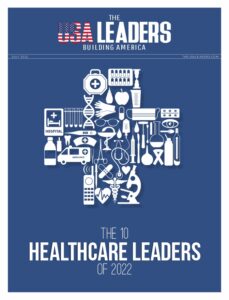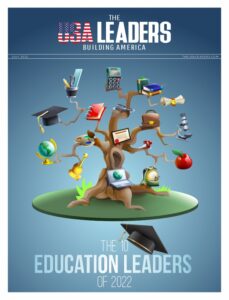Did you know that, by 2025, the global AI in education market is expected to reach $25.7 billion, growing at a compound annual growth rate of 47.77%? AI is no longer a futuristic concept but a reality that transforms education in numerous ways. It enhances learning outcomes, personalizes instruction, and automates tasks, opening up new possibilities for educators and learners.
However, AI in education does bring its own challenges and misconceptions. Many people harbor fears or doubts about how AI will impact education and what it can or cannot achieve. Some of these myths may hinder the acceptance of AI’s potential in education and its effective handling.
In this blog post, we will debunk five common myths about AI in education and provide factual evidence to support our claims. We will also discuss the implications and benefits of using AI as a tool to support human-centered education, rather than viewing it as a threat to replace traditional methods.
Here are the five myths we will debunk about AI in Education
- Myth 1: AI will replace human teachers and learners.
- Myth 2: AI systems are only as good as the data they train on.
- Myth 3: AI systems are inherently unfair.
- Myth 4: AI systems are “black boxes,” far less explainable than non-AI techniques.
- Myth 5: AI systems are smarter than humans.
Are you ready to learn more about AI in education and bust some myths? Let’s get started!
1. AI will replace human teachers and learners
One of the most common myths about AI in education is that it will replace human teachers and learners. This myth is based on the assumption that AI systems can perform all the tasks and functions that humans can, or even perform them better. However, this is not the case. AI systems cannot replace human intelligence, creativity, or emotions; instead, they can complement and enhance them.
AI can assist teachers in several ways, including providing instant and personalized feedback to learners based on their performance and progress. Additionally, AI can automate the grading and evaluation of learners’ work, saving valuable time and resources for teachers. It can also help teachers customize the curriculum and instruction to meet the individual needs and preferences of each learner, utilizing adaptive learning systems and recommender systems.
Similarly, AI can enhance learners’ motivation, engagement, and agency. For instance, it can create engaging and interactive learning environments, such as games, simulations, or virtual reality. AI can also support learners’ self-regulation and metacognition by offering scaffolding, guidance, and feedback. Moreover, AI empowers learners to pursue their own interests and goals by providing access to diverse and relevant resources and opportunities. For instance, platforms offering IGCSE courses online enable students to learn at their own pace, leveraging AI-driven support and personalization to optimize outcomes.
Therefore, using AI as a tool to support human-centered education yields numerous implications and benefits. It can enhance the quality and efficiency of education by offering personalized and adaptive learning experiences. Furthermore, it fosters the development of 21st-century skills, such as critical thinking, creativity, collaboration, and communication. Additionally, it promotes equity and inclusion in education by reducing barriers and disparities in access and opportunities.
2. AI systems are only as good as the data they train on
Another common myth about AI in education pertains to the notion that AI systems rely solely on the quality of their training data. This myth hinges on the assumption that data constitutes the most pivotal and decisive element in determining AI performance and innovation. Nevertheless, this premise is fallacious. Data, while undeniably significant, does not stand as the sole influencer of AI capabilities; algorithms, hardware, and human expertise also play crucial roles.
Addressing data-related challenges can take various forms through strategies such as meticulous problem definition, focused data sampling, synthetic data generation, and the integration of constraints within models. For instance, meticulous problem definition aids in delineating the scope and objectives of an AI project, and in identifying pertinent and dependable data sources. Targeted sampling serves to reduce the volume and complexity of requisite data while enhancing its representativeness and diversity. The utilization of synthetic data allows for the creation of new, realistic data, which can supplement or replace genuine data, addressing issues like privacy, security, or data scarcity. The incorporation of constraints within models facilitates the infusion of domain knowledge, ethical principles, and fairness criteria into AI systems, thereby averting undesirable outcomes or behaviors.
Hence, employing AI as a means to enhance data quality rather than as a product dependent on it carries myriad implications and advantages. It can heighten the accuracy and resilience of AI systems by mitigating errors, noise, or bias within the data. Additionally, it can stimulate creativity and innovation in AI systems by enabling novel combinations, transformations, or data generation. Furthermore, it can bolster trust and confidence in AI systems by ensuring alignment with human values and expectations.
3. AI systems are inherently unfair
A third common myth about AI in education is the belief that AI systems are inherently unfair. This myth is rooted in the assumption that AI systems possess their own agenda or preferences, leading to the possibility of discrimination or harm directed at certain groups or individuals. However, this assumption is inaccurate. Unfair bias in AI arises from human decisions regarding the design, testing, and deployment of an AI application, rather than being an inherent characteristic of AI itself.
Unfair bias can be identified and rectified through various techniques, including fairness metrics, bias audits, and debiasing algorithms. For instance, fairness metrics can gauge and compare the performance and impact of an AI system across different groups or individuals. Bias audits can pinpoint and examine the sources and causes of unfair bias within an AI system, such as data, algorithms, or context. Debiasing algorithms can mitigate or eliminate unfair bias from an AI system by making adjustments to the data, model, or output⁵.
Therefore, viewing AI as an opportunity to foster fairness and inclusion in education, rather than as an obstacle to be avoided, carries significant implications and benefits. It can enhance the quality and equity of education by ensuring that all learners have access to equitable and pertinent learning opportunities and outcomes. Additionally, it can cultivate ethical and responsible skills such as critical thinking, empathy, and awareness. Moreover, it can bolster trust and confidence in AI systems by aligning them with human values and expectations.
4. AI systems are “black boxes,” far less explainable than non-AI techniques
A fourth common misconception about AI in education is that AI systems are overly complex and less explainable compared to non-AI methods. This misconception arises from the belief that AI systems are too intricate and hide their logic or reasoning from human users. However, this is not accurate. Explainability in AI exists on a spectrum, influenced by various factors, including the type of AI technique, level of abstraction, and the intended audience.
There are numerous techniques to enhance explainability, such as feature attribution, model visualization, or natural language generation. For instance, feature attribution aids in identifying and emphasizing the most critical or influential features or inputs contributing to an AI output or prediction. Model visualization illustrates and simplifies the structure or behavior of an AI model, showing how different layers or neurons interact or activate. Natural language generation translates and communicates the output or process of an AI model into natural language, providing textual summaries or explanations.
Consequently, using AI to enhance transparency and accountability in educational decision-making, rather than obscuring it, has significant implications and advantages. It can improve the quality and reliability of AI systems by enabling users to verify, validate, or debug them. It can also foster the development of cognitive and social skills, such as critical thinking, curiosity, and collaboration while increasing trust and confidence in AI systems by ensuring alignment with human values and expectations.
5. AI systems are smarter than humans
The fifth and final myth about AI in education suggests that AI systems outsmart humans. This myth hinges on the assumption that AI systems can outperform humans in any task, or even outdo them. However, this is far from the truth. AI systems are not superior to humans; instead, they specialize in narrow domains that demand specific skills or knowledge.
AI systems often struggle with numerous tasks and functions, such as common sense reasoning, social interaction, and creativity. For instance, common sense reasoning involves the ability to comprehend and apply fundamental facts and logic about the world, such as understanding that water is wet or that birds can fly¹. AI systems lack this ability and frequently make nonsensical or illogical errors when confronted with straightforward or novel situations. Social interaction pertains to the capacity to communicate and collaborate with other people, using language, gestures, or emotions.
AI systems fall short in this area, often misinterpreting or inadvertently offending human users when attempting to engage in conversation or cooperation. Creativity encompasses the ability to generate new and original ideas or products, like writing a poem, composing a song, or inventing a device. AI systems lack this ability and often produce uninspired or derivative outputs when endeavoring to mimic human creativity.
Therefore, utilizing AI as a collaborative partner with humans, rather than as a competitor aiming to challenge them, carries numerous implications and benefits. It can enhance the quality and diversity of education by leveraging the strengths of both human and AI intelligence. Moreover, it can promote the development of complementary and synergistic skills, such as problem-solving, communication, and innovation. Lastly, it can bolster trust and confidence in AI systems by ensuring alignment with human goals and values.
We have come to the end of this blog post, where we have debunked five common myths about AI in education. We have also discussed the implications and benefits of using AI as a tool to support human-centered education, not as a threat to replace it.
If you want to learn more about AI in education, we suggest you check out some of these resources:
- Artificial Intelligence in Education: Promises and Implications for Teaching and Learning A book that explores the current and future trends of AI in education, and offers practical guidance for educators and policymakers
- AI for Education: A website that provides information, resources, and examples of AI applications in education
- AI in Education Specialization: A course that teaches the fundamentals of AI and how to apply them in education, such as designing, developing, and evaluating AI education tools.
We hope this blog post has helped you to understand AI in education better and to bust some myths that may have prevented you from embracing its potential or addressing its challenges. We believe that AI can be a powerful ally for human teachers and learners if we use it wisely and responsibly.
Let us know your thoughts on AI in education, and do you think AI is the next revolution in education as well, unlike any other sector?
ALSO READ: 5 Vital Canva App Tips to create Captivating Designs






















